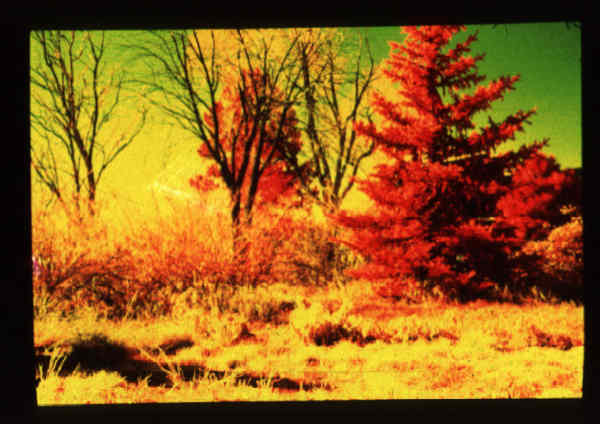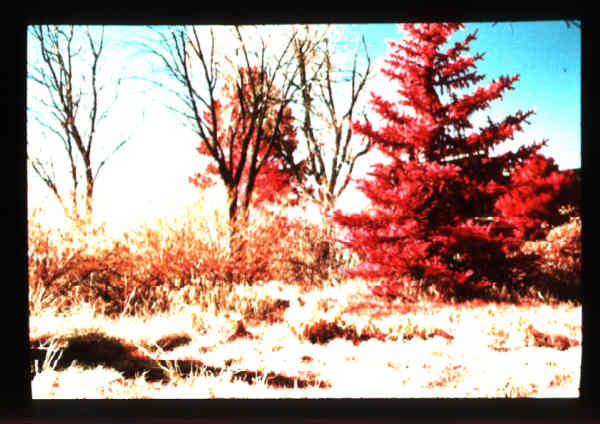


Photos by Joe McGloin
Minolta MG-S
"When we think of infrared film, we normally think of B&W. But color IR is made, as well. Just like B&W IR, color IR is also sensitive to normal, visible light and it's up to the photographer to decide whether or not to include it -- and how much. Kodak sells color IR in the Ektachrome line as an E-6 compatible color slide film. It is only available in 36mm rolls of 36 exposures. The film has three color emulsions -- red, green and blue -- just like with other color films. But there is a difference. In color IR, the IR light in the seen, exposes the red emulsion, the red light in the scene exposed the green emuslsion, etc. No wonder it's often referred to as false-color film. Depending on how it is exposed and filtered, different layers are exposed with different effects."
The first shot shows the effects with a full-blown IR filter. (f16 @ 1/30) This is my home-made filter using gelatins from normal red and green filters in a sandwich. Only full IR light hits the film which only exposes the red layer in this film. So everything comes out red or black. You could get the same results by exposing B&W IR and printing it on color paper with red filtration. The next shot is taken with a normal red filter. (f16 @ 1/60) This lets in IR and red light -- the red light exposing the green emulsion layer. The third shot is taken with a normal orange filter. (f16 @ 1/60) This lets in even more light, such as yellow, and even more emulsion layers are exposed. The results approach normal, but green is never recorded, so it's either black or red -- if it reflects IR light as this tree does. All shots were developed in Unicolor Rapid E-6 at 105 degrees for 6.5 minutes (first developer), and 4.5 minutes (color developer).
COPYRIGHT @ 1995, 1996, 1997, 1998, 1999, 2000, 2001, 2002, 2003, 2004, 2005 by Joe McGloin. All Rights Reserved.